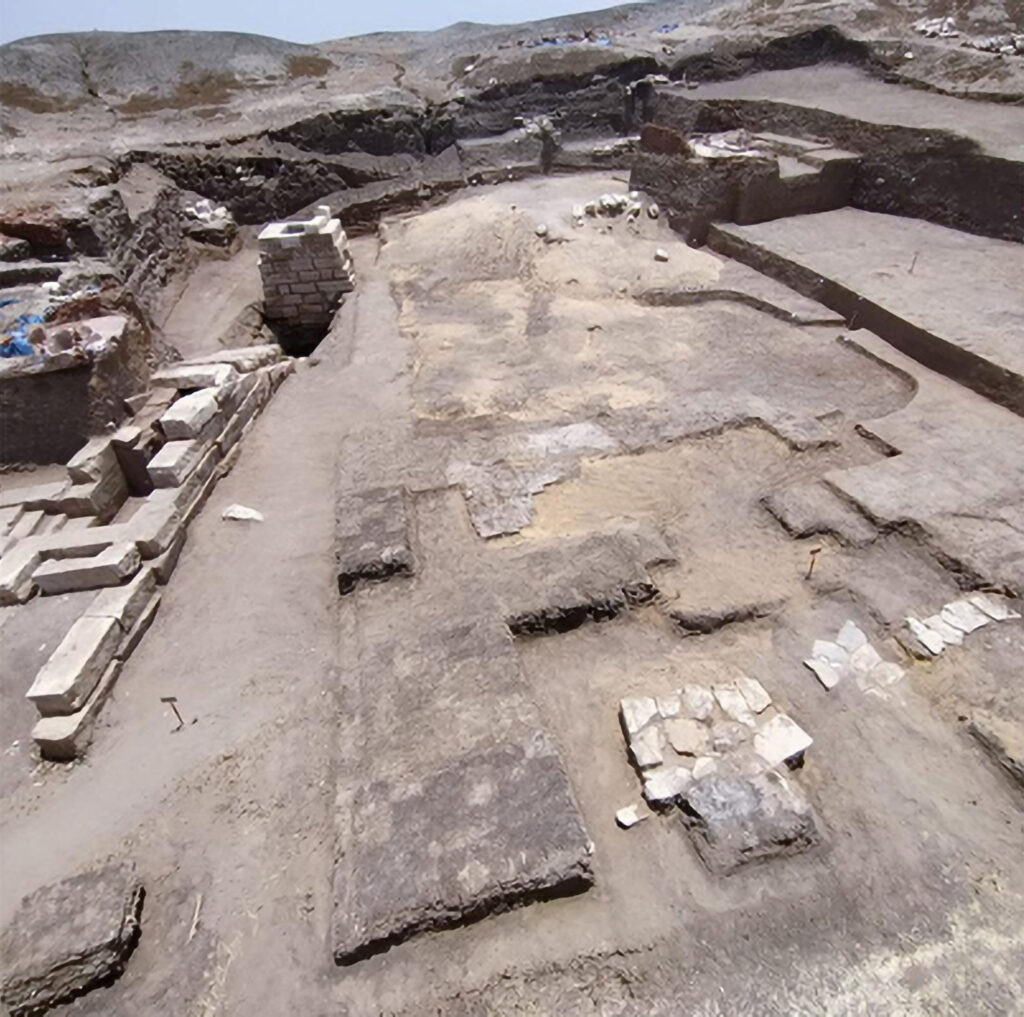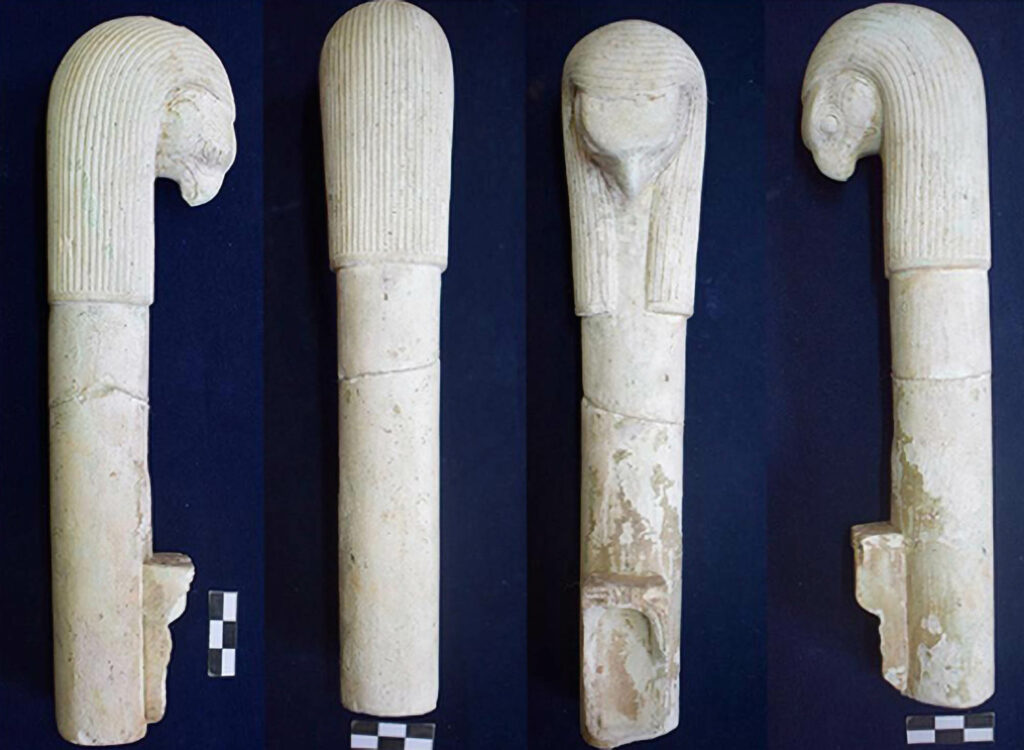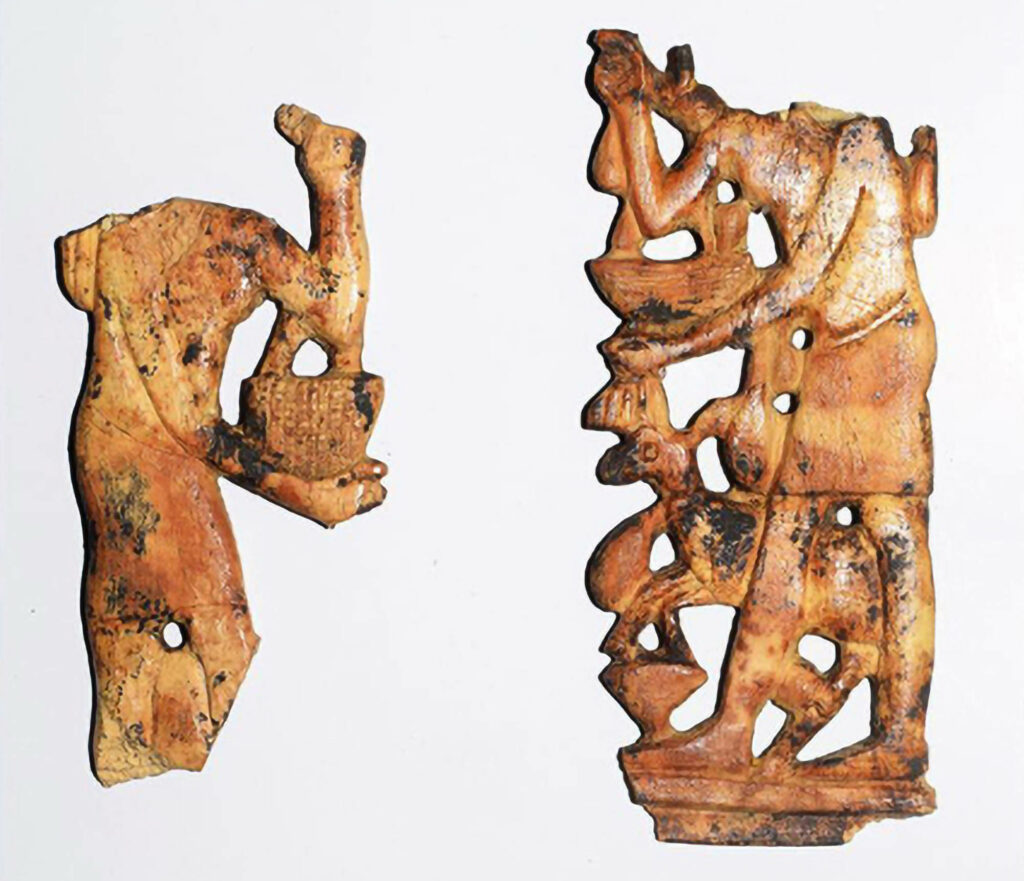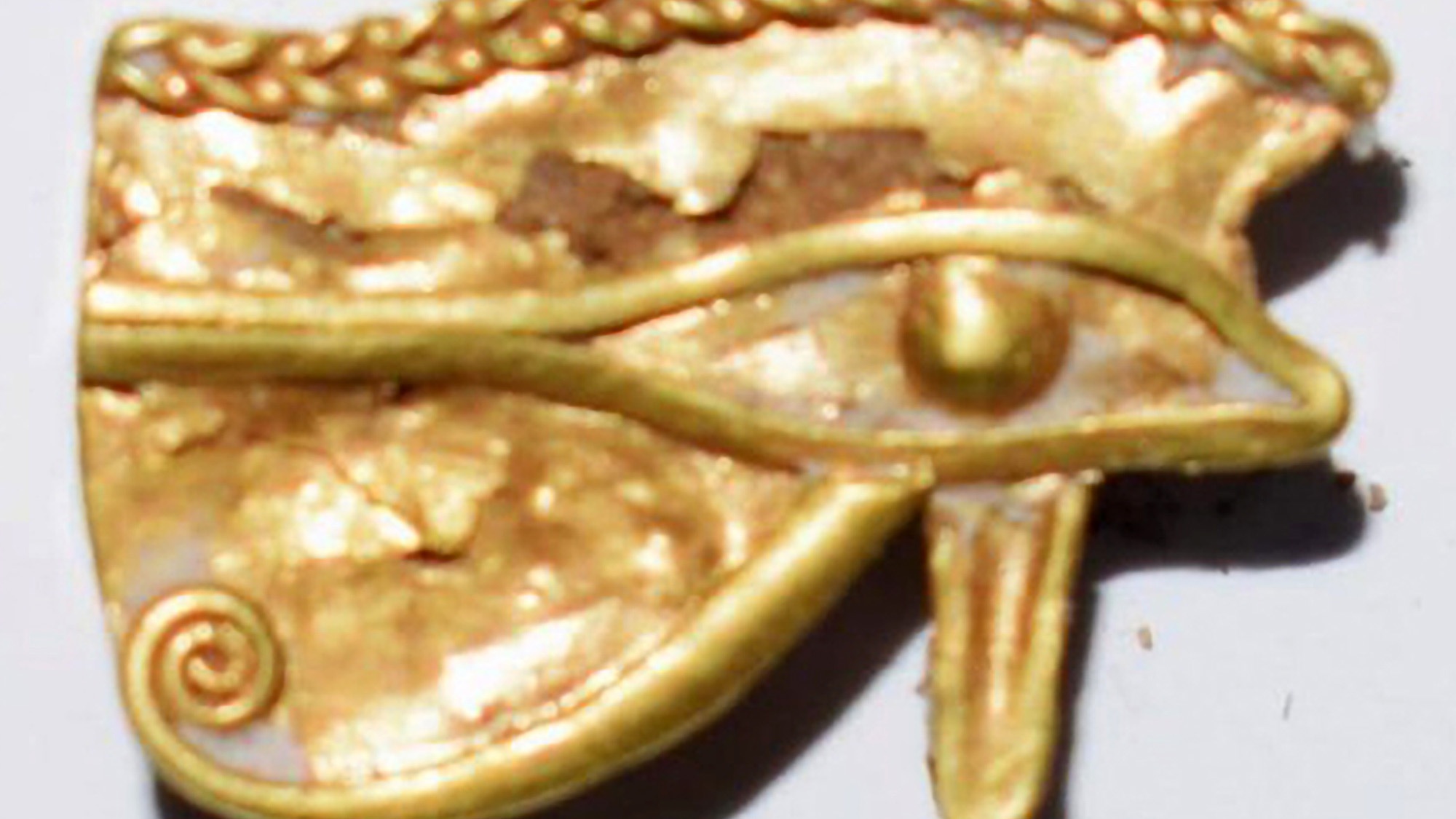Egyptian archaeologists have unearthed a pure gold Eye of Horus as well as various ancient religious tools that were used in daily rituals worshipping ‘Hathor’, the Egyptian goddess of love and fertility.
The discoveries took place at the Temple of Pharaohs (Boto), in the Kafr El-Sheikh governorate, which is just north of the Egyptian capital city of Cairo, with the archaeologists discovering a collection of ancient tools once used to perform religious rituals, including in honour of Hathor, who was the goddess of the sky, of women, of fertility and of love.
Mustafa Waziri, the secretary-general of Egypt’s Supreme Council of Antiquities, explained that some of these tools were used to worship Hathor.

These included a limestone pillar depicting Hathor, as well as various clay vessels that were used in ceremonies in her honour.
They also found incense burners, one of them bearing the head of the god Horus, the son of Osiris and Isis and who was the god of kingship and the sky.
Other interesting finds included a collection of small statues of the deities Taweret, the goddess of childbirth and fertility, and of Thoth, said to be the inventor of writing who was also a god of the moon and of learning.
They also found a pure gold Udjat eye, also known as an Eye of Horus, along with the remains of some golden scales.
The eyes of Horus are typically made up of a left eye and a right eye. The left eye is known as the Eye of Thoth and the right eye is known as the Eye of Ra. The Eye of Thoth is linked with the moon and with feminine energy, while the Eye of Ra is linked with the sun and with masculine energy.
The experts did not specify if they had found an Eye of Ra or an Eye of Thoth, but judging by the images, it appears to be an Eye of Ra.

The head of the Ancient Egyptian Antiquities Sector, Aymen Ashmawy, added that they had also found pieces made of ivory showing women carrying offerings, presumably for the gods.
There was also a large limestone lintel bearing hieroglyphic symbols and a partial, royal painting showing a Pharaoh performing some religious rituals at the temple.
They also found other hieroglyphic inscriptions that mentioned Pharaoh Psamtik I, who ruled Egypt from 664 BC to 610 BC, as well as two other kings from the 26th dynasty, “Waha Ip-Ra” and “Ahmose II”.
The discoveries were part of a series of excavations plans and being undertaken by Egypt’s Supreme Council of Antiquities.


To find out more about the author, editor or agency that supplied this story – please click below.
Story By: Joseph Golder, Sub-Editor: Joseph Golder, Agency: Newsflash
The Ananova page is created by and dedicated to professional, independent freelance journalists. It is a place for us to showcase our work. When our news is sold to our media partners, we will include the link here.




